13+ Sample Subcontractor Statement
-
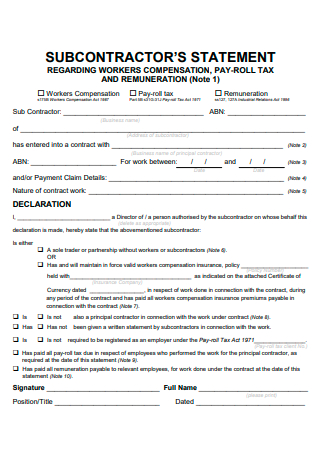
Subcontractor Statement Template
download now -
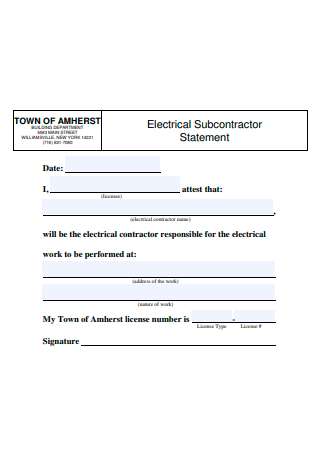
Electrical Subcontractor Statement
download now -
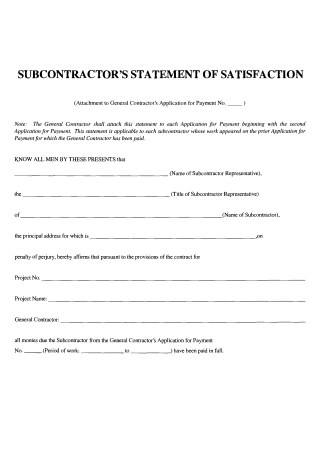
Subcontractor Statement of Satisfaction
download now -
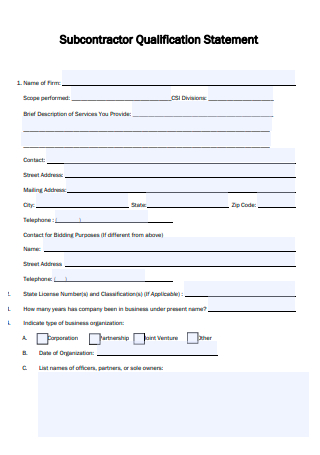
Subcontractor Qualification Statement
download now -
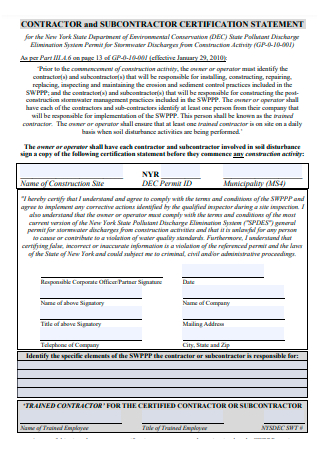
Contractor and Subcontractor Certification Statement
download now -
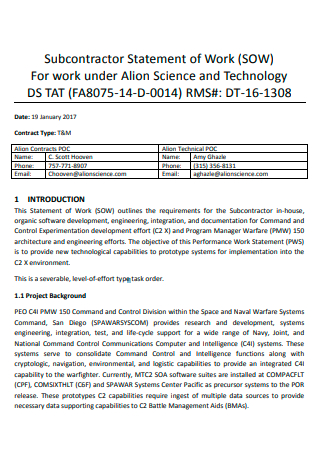
Subcontractor Statement of Work
download now -
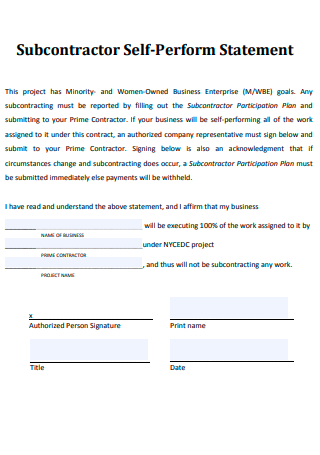
Subcontractor Self-Perform Statement
download now -
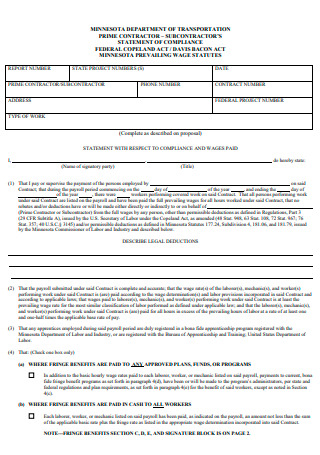
Subcontractor Statement of Compliance
download now -
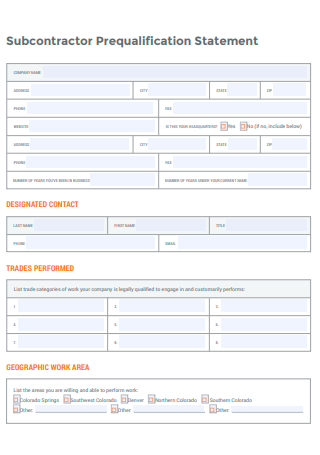
Subcontractor Prequalification Statement
download now -
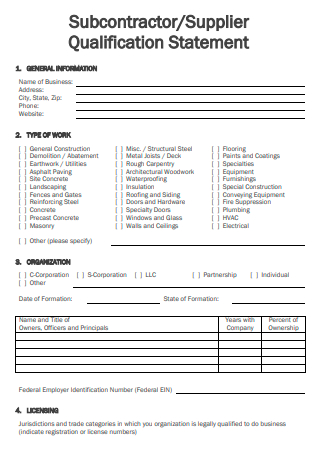
Subcontractor Supplier Qualification Statement
download now -
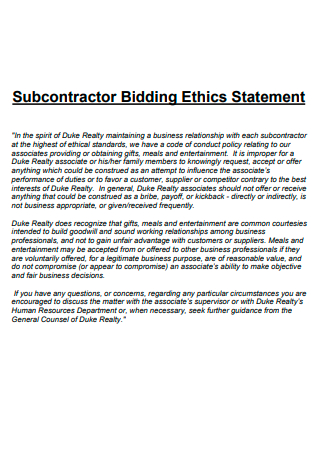
Subcontractor Bidding Ethics Statement
download now -
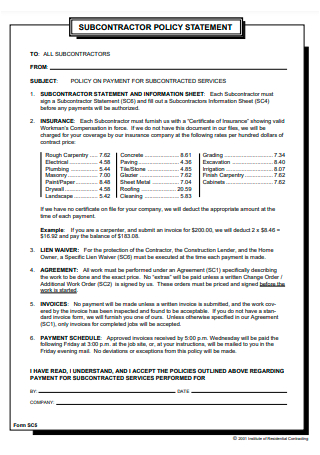
Subcontractor Policy Statement
download now -

Subcontractor Supplier Statement of Persons
download now -
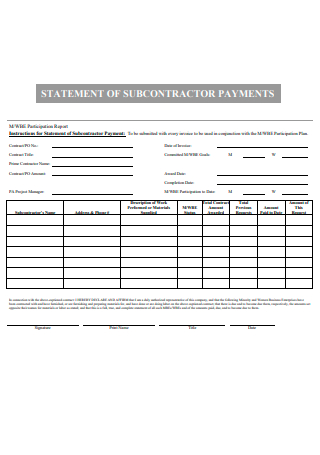
Subcontractor Payments Statement
download now
FREE Subcontractor Statement s to Download
13+ Sample Subcontractor Statement
What Is a Subcontractor Statement?
What Are Various Statutes in a Subcontractor Statement?
Elements of a Subcontractor Statement
Steps in Writing a Subcontractor Statement
FAQs
What is the best course of action for a principal contractor in this situation?
What is the best course of action for a subcontractor in this situation?
What is the proper way to fill out a subcontractor agreement?
Are subcontractors considered employees in the eyes of the law?
Is it possible to make changes to the subcontractor agreement template?
Who is the first part of a subcontractor agreement?
What Is a Subcontractor Statement?
The term “subcontract” refers to a sort of agreement that exists between a major contractor and a subcontractor. This is typically done in order to ensure compliance with the applicable laws. The Workers Compensation Act of 1987, the Payroll Tax Act of 2007, and the Industrial Relations Act of 1996 are the most often cited pieces of legislation. A subcontractor statement grants you the absolute right to collaborate with the principal contractor on the construction project, the right to be compensated for your efforts on a specific project, and the right to assume full responsibility in the event that the project does not comply with the applicable laws. Even if you were to enter into this type of arrangement without providing an agreement form, there is a good probability that the duties and rights would be transferred back to the principal contractor.
Other templates are available on our website, and you can use them whenever you need them. They are as follows: General Subcontractor Agreement, Shared Services Agreement, bid contracts, cleaning services bid sheets, job contracts, service agreement, bowling score sheets, Business Lease Proposal, standard subcontractor agreement, property purchase agreement, Project Budget Proposal, Retail Lease Proposal, and other similar templates are available. This post will not only provide you with templates but will also provide you with important information that you need to know in order to complete your template.
What Are Various Statutes in a Subcontractor Statement?
Please keep in mind that if you are not diligent enough with the standards for the subcontractor statements, you may find yourself in a position where you are liable for more than you anticipated. Consequently, here’s everything you need to know about subcontractor statements: Subcontractors declare in their subcontractor declarations that they have already met their insurance payment, payroll tax payment, and remuneration responsibilities and that they have no further commitments to fulfill. If it turns out that the principal contractor did not obtain a subcontractor statement, he or she will be subject to a number of legal obligations. As previously said, there are three specific statutes or laws that will be discussed in this section.
1. The Workers’ Compensation Act
A written statement given by the subcontractor pursuant to Section 175B(2) is required if the principal contractor wishes to be reimbursed for workers’ compensation insurance premiums paid by the subcontractor in connection with work done in connection with this contract during any period of the contract. The principal contractor will not be reimbursed unless he has a written statement given by the subcontractor pursuant to this section for that period of time. You should also see our quarterly income statement.
2. Payroll Tax Act of 2007 (Payroll Tax Act of 2007)
It is possible that primary contractors will be held responsible for payments if they believe or assumes that the representations were regarded as false. It is then necessary to prove the guilt of the subcontractors who provided misleading information. Under this law, the major contractors have the right to withhold payment from the subcontractors. Another point to mention is that a major contractor who has paid the payroll tax may be able to reduce their loss. You should also see our business purpose statement.
3. The Industrial Relations Act of 1996
States in Section 127 that “a principal contractor is liable for the payment of any remuneration of the relevant employees that have not been paid for work done in connection with the contract during any period of the contract unless the principal contractor has a written statement given by the subcontractor under this section for that period of the contract.” This section applies to both general and specialty contractors.
Elements of a Subcontractor Statement
A subcontract statement must be established in order to control your business relationship with the subcontractor that you have selected for the job. You can create a plan for the agreement by following the instructions in the template provided below. When crafting a good subcontractor statement, it is essential that you follow the three recommended practices listed below.
Steps in Writing a Subcontractor Statement
Each component of a basic subcontractor agreement template is written in succinct and professional language, and each section has a number of provisions that must be met. For the purpose of avoiding future uncertainty or ambiguities, the terms of the sublease statement format should be written in an understandable and succinct manner. All parties who agree to the conditions of the subcontractor statement will be legally protected from each other as a result of this clarity. Here are the steps to take while creating a standard subcontractor statement, in order of importance:
Step 1: Define the Scope of the Project
This section of the agreement describes the work that will be performed as well as the overall scope of the project. It takes into consideration the requirements of the client, the responsibilities of the subcontractor, and your own expectations as a contractor. You should also see our medical problem statement.
Step 2: Estimated Completion Date
The statement will detail how much more time you will grant to subcontractors in order for them to complete their tasks. The fact that you have specified a deadline that is well in advance of your own ensures you will have enough time to assess the job completed by the subcontractor. For both you and the client, knowing that the job is of high quality brings a piece of mind. You should also see our freelance statement.
Step 3: Paying and Billing Information
This section describes the remuneration that the subcontractor earned for the work that they performed. The subcontractor will be compensated in accordance with the scope of work. If the subcontractor requires additional time to execute all of their tasks, the contract should state any required extensions as well as any Additional Payments that are required.
Step 4: Responsibilities in the Event of an Accidental Damage Claim
In terms of insurance, you may or may not be covered for the errors, omissions, or accidental damage caused by the subcontractor’s employees. If you have insurance, you must submit the information in this section. If this is not the case, the insurance provider must explain the client’s insurance obligations as well.
Step 5: Assignment Permissions and Restrictions on Assignment
It is possible to specify precise constraints and permits that apply to the subcontractor’s hiring of additional workers to help them in performing their task under this section of the agreement. The practice of placing restrictions on your hired subcontractor in order to avoid spreading the line of work’s obligations too thinly is not uncommon in the construction industry.
Step 6: Warranties and guarantees
This section must include any assurances provided by you to the subcontractor, as well as any assurances provided by the subcontractor to you. As a result, you will need to hire subcontractors to complete all or a portion of the work required to complete your client’s project successfully. A typical agreement with a subcontractor should outline the subcontractor’s liabilities, responsibilities, and tasks, as well as any additional terms or conditions that have been agreed upon by both parties in advance of the agreement.
FAQs
What is the best course of action for a principal contractor in this situation?
Before making a payment to a subcontractor, a primary contractor should ensure that he or she has received a reputable subcontractor statement from the subcontractor.
What is the best course of action for a subcontractor in this situation?
As a subcontractor, you should make certain that you have met all of your payment and statement duties in order to ensure that they receive the compensation they are entitled to receive.
What is the proper way to fill out a subcontractor agreement?
During the course of the contract, the subcontractor should agree to have employed workers, to have paid and compensated them, to have paid remuneration, to have paid the employees’ payroll taxes, and to have been given a written statement relieving the principal contractor of his or her responsibility.
Are subcontractors considered employees in the eyes of the law?
A subcontractor is not considered to be an employee. Subcontractors are self-employed individuals who do not work for the general contractor and who make their own decisions on how to do their tasks.
Is it possible to make changes to the subcontractor agreement template?
Recognize that, depending on the scope of the project, agreements may need to be revised. As a result, we have made our template available in both Word and PDF formats.
Who is the first part of a subcontractor agreement?
First and foremost, the Contractor must be specified. In this case, the entity responsible for signing the customer contract and hiring the Subcontractor is the customer.
In order to ensure that you receive the compensation you deserve as a subcontractor on a certain project, you must be able to complete the project as specified in your contract. You should always require your major contractor’s subcontractors to provide them with the agreement so that they can keep track of the compensations that they require. This is a requirement of their role as the general contractor in the first instance. A payment claim or a certificate of currency is required in order to confirm the validity of your agreement. Consider reviewing some of the subcontractor statement samples and templates offered in the post for your reference if you want to see more examples and formats.
